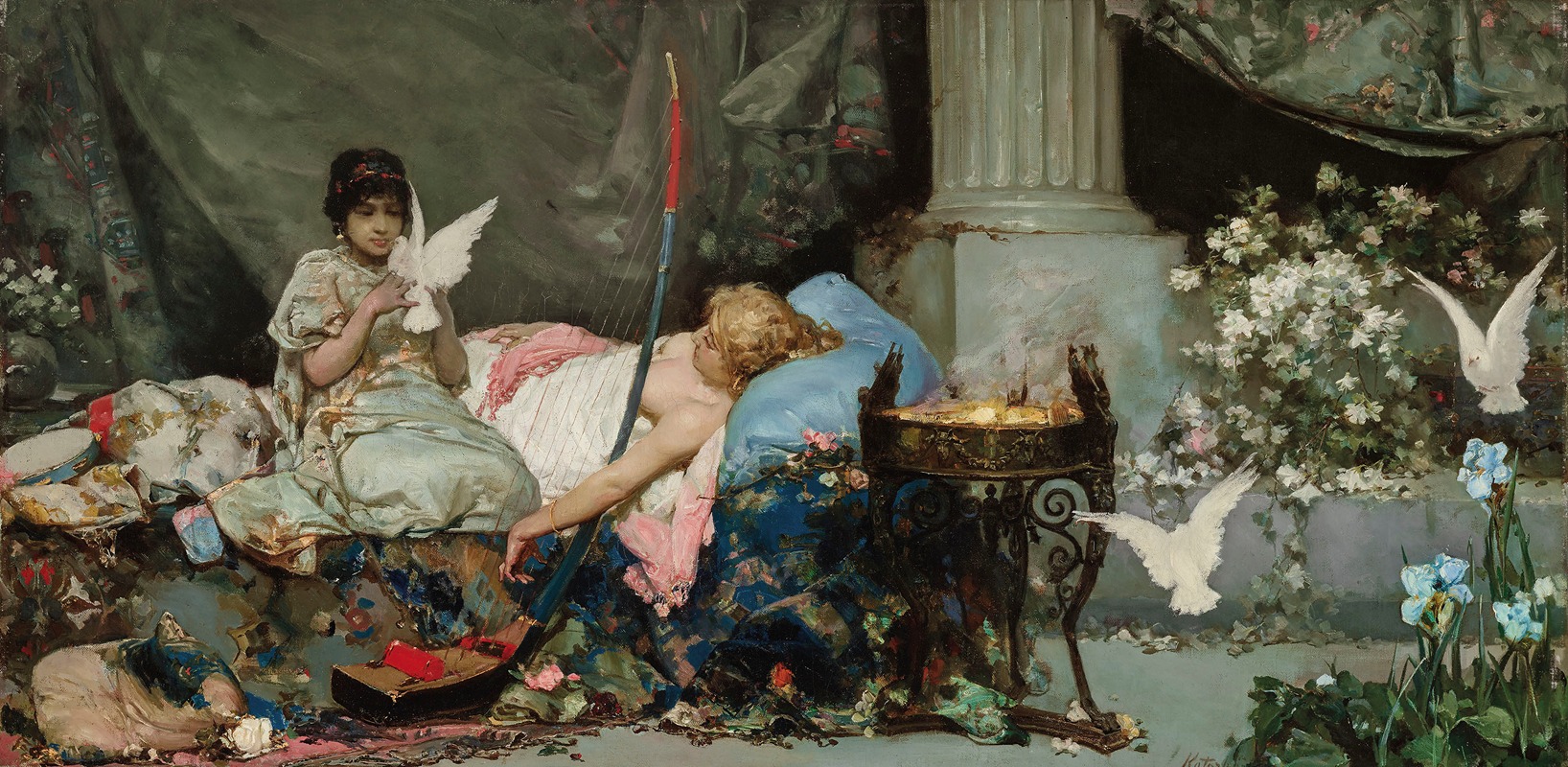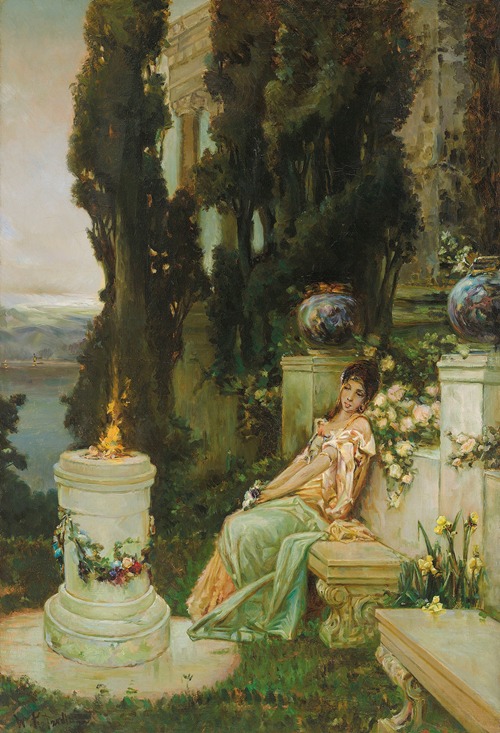
Focusing on fantastical, biblical and otherwise ancient-inspired subjects, Wilhelm Kotarbinsky's work exists at the nexus of academism, Art Nouveau, and Symbolism.
Kotarbinsky had a rather difficult climb to prominence, with abject poverty being one of the few constants during the early years of his training. Lacking the support of his father, Kotarbinsky was obliged to borrow money from his uncle in order to fund his study in Italy in 1871, where he would remain for the next 16 years. While there, he met the artist brothers Pavel and Alexander Svedomsky, who along with Professor Adrian Prakhov invited Kotarbinsky to participate in the painting of fresco decoration for the St. Vladimir Cathedral in Kiev, alongside such luminaries of Russian art as V. Vasnetsov, M. Vrubel, and M. Nesterov. The project greatly contributed to Kotarbinsky rise to prominence, and brought him into contact with the upper echelons of the Kievan society, resulting in commissions for the decoration of homes belonging to various illustrious families, such as Tereshchenko, Khanenko, and Soldatenkov.
Despite his inclination towards large-scale canvases, Kotarbinsky was an incredibly prolific artist- showcasing over 100 works in a variety of media at the 1898 Imperial Academy of Art exhibition, where he was elected as an academic in 1905.

